This time only some spoken words from a short interview by Erica Robb.
Progress of the self-portrait
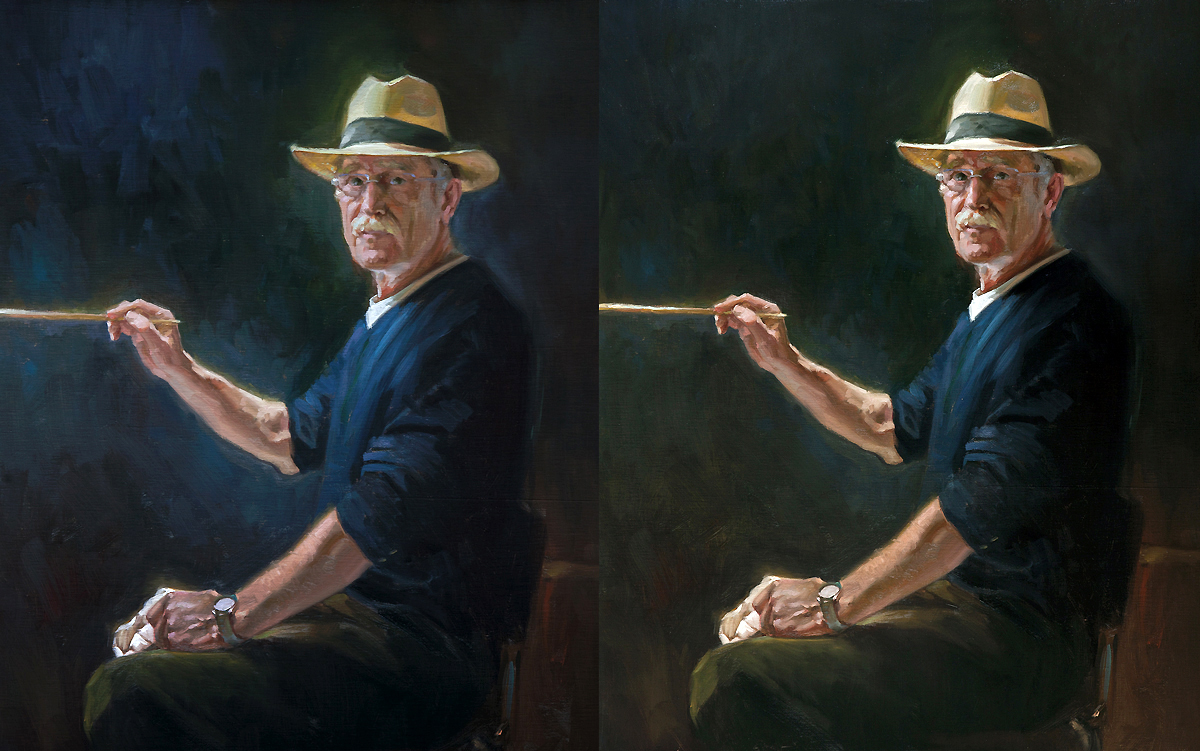
Three weeks ago I showed you the progress of the self-portrait. I said that in the end I was not entirely convinced by the result. Many people left a comment and a few had suggestions for adjustments. I also was asked to show the final result. Here is the outcome as it will be shipped to London next week. I actually have not done much but for me it changed substantially. The rub was in the background. My aim is always to match the subject and background in order to let them take part in one and the same atmosphere, in a believable way. In the first version there was too much blue and that was the reason there was no “palpable air” provided. What did I do in the background? With a broad brush I applied a layer of Raw sienna, extremely diluted with W & N Oil Liquin. In order to distribute it evenly I rubbed it with a cloth. Now temperature has changed and it looks better.
I also “calmed down” some brushstrokes on the left of my face, and I added a few accents in the lights and the darks.
Portrait painting from live model
A quick approach wet-in-wet.
Since the beginning of this year, we meet every Tuesday afternoon in my studio to work with live models. We, that is to say, a few fellow artists and me. We start at 17:00 and usually work for two hours. In between sittings we have a short tea break. Our models are people from the neighborhood. The goal is not to create beautiful portraits but to be engaged as an athlete trains and a pianist does his exercises. See also here. And here.

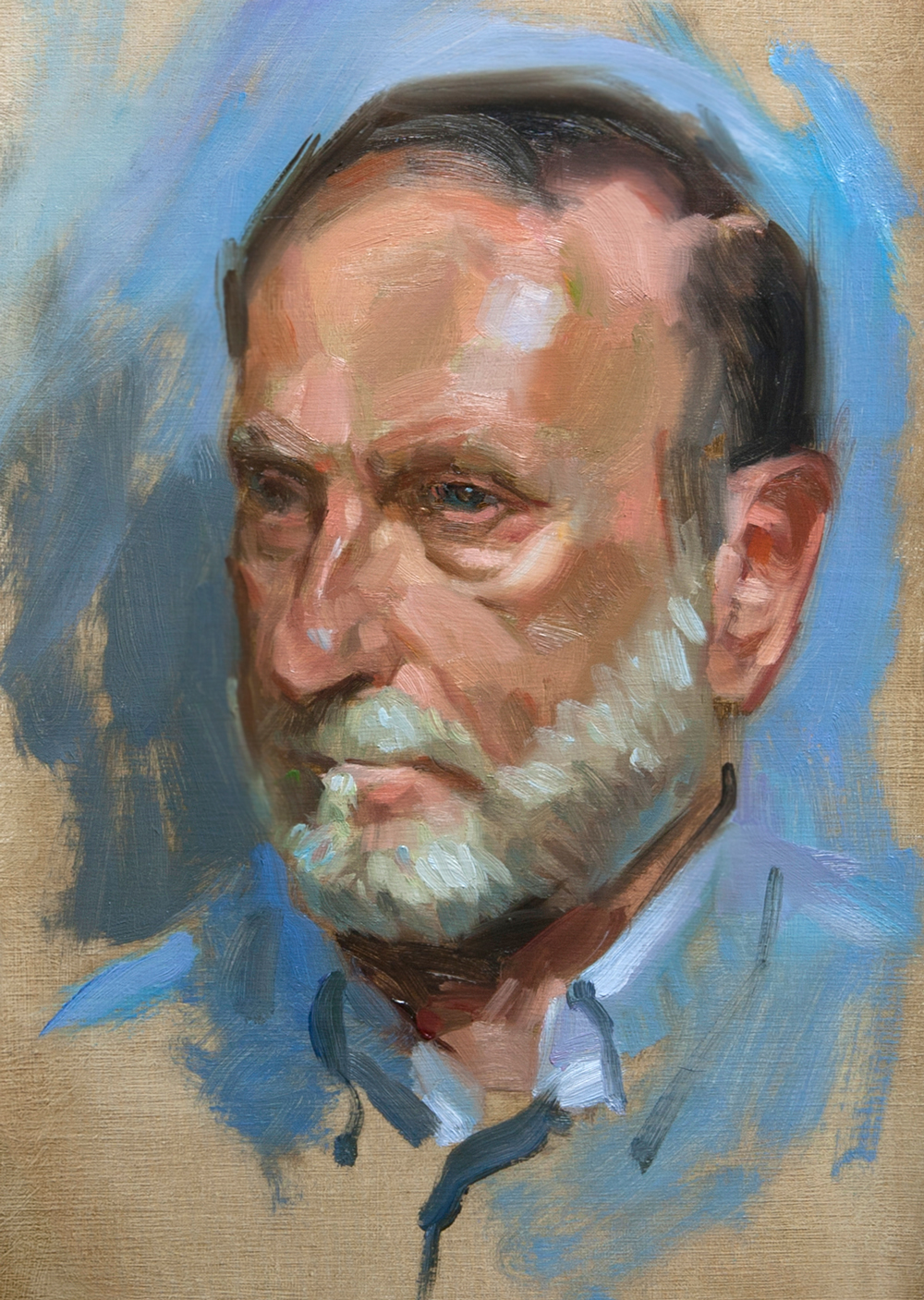
Excursion to the Spanish Civil War

 One of the first people I met in Spain was Sento Llobell a fellow worker in art. Over the years he and his wife have become very good friends of ours. Sento is a famous cartoonist, he has published quite a few albums of his own work. He received international recognition for the graphic novel “Un Médico Novato” for which he won the Premio Internacional VI Fnac Sins Entido. The story is based on a true narrative of Sento’s father in law Pablo Uriel, who was starting his career as a doctor during the civil war (1936-1939). Under his own auspices Sento has published the second part of this history “Atrapado en Belchite” and yesterday the book was launched in Belchite, a town in Zaragoza where in 1937 a bloody battle took place between the republicans and the army of the future dictator Francisco Franco. For propaganda reasons Franco never rebuilt the place and to this day it is a gruesome reminder of the Spanish Civil War. Part of Sento´s story takes place in this city during that combat and hence he chose this place to present the book.
One of the first people I met in Spain was Sento Llobell a fellow worker in art. Over the years he and his wife have become very good friends of ours. Sento is a famous cartoonist, he has published quite a few albums of his own work. He received international recognition for the graphic novel “Un Médico Novato” for which he won the Premio Internacional VI Fnac Sins Entido. The story is based on a true narrative of Sento’s father in law Pablo Uriel, who was starting his career as a doctor during the civil war (1936-1939). Under his own auspices Sento has published the second part of this history “Atrapado en Belchite” and yesterday the book was launched in Belchite, a town in Zaragoza where in 1937 a bloody battle took place between the republicans and the army of the future dictator Francisco Franco. For propaganda reasons Franco never rebuilt the place and to this day it is a gruesome reminder of the Spanish Civil War. Part of Sento´s story takes place in this city during that combat and hence he chose this place to present the book.
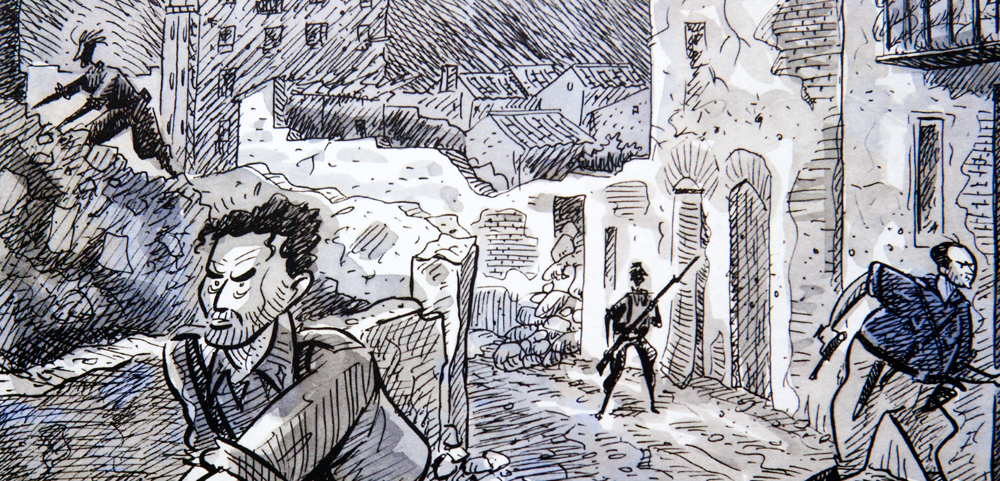
Portrait painting: Pamper yourself with good stuff!
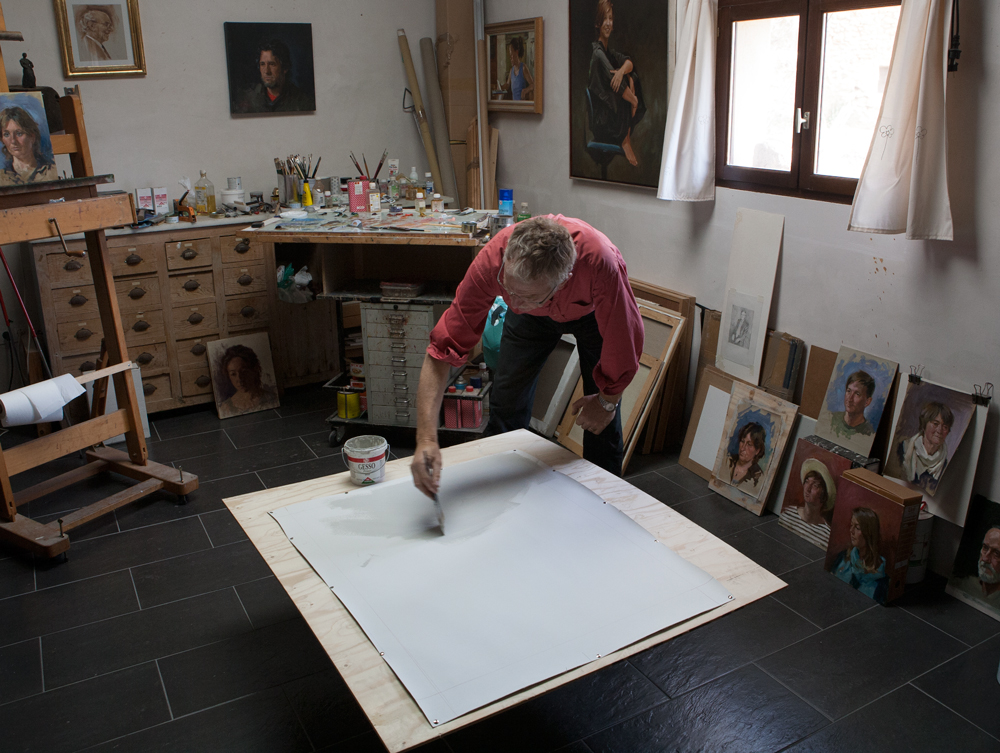
Suppose you want to learn to play the piano. The instrument on which you start is old, not in tune and with missing keys. Would that invite you to sit down and study? No! It will turn your stomach! The same goes for learning to paint. Poor art supplies will not encourage you to make a good painting. Believe me, good stuff really makes a difference! Starting with the canvas. A miserable support base is a principal stumbling block, I can´t stress it enough.
- Whatever you buy, even the best double primed Belgian Linen, apply at least three layers of gesso in order to reduce the suction of the oils.
- Use good brushes if you can afford it.
- Buy good quality paint. Some brands of student quality is reasonable, but there is also a lot of crap on the market. Oil painting technique in itself is hard enough so do not let poor materials makes you stop before you even get started. (see also here)
Good stuff makes you happy!
Yesterday in London
I was in London this week for a portrait commission. There and back in two days. I hope to show you later some of this very interesting assignment. I visited the client in his office in the Millbank Tower.
Of course I did not miss the opportunity to enter the Tate, as it is next door after all. I went directly to the Singer Sargents. I admit it: I’m quite the monomaniac sometimes. I took some pictures and I include them here with some comments. I am safely back home now and return to work with new enthusiasm, kindled by our eternal hero John Singer Sargent.
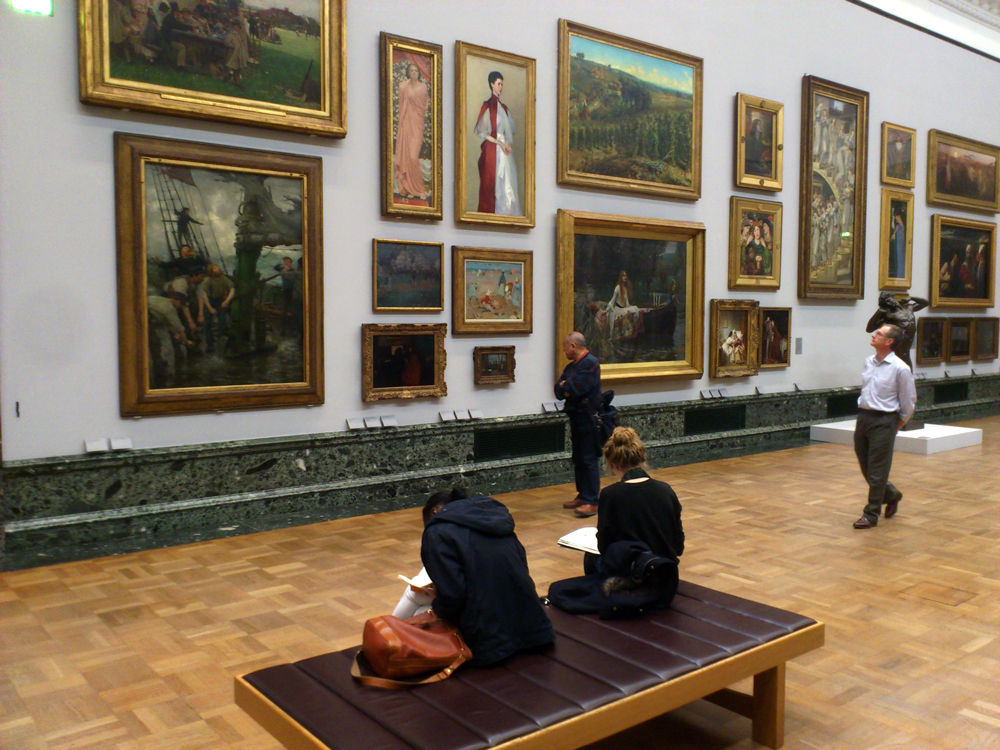
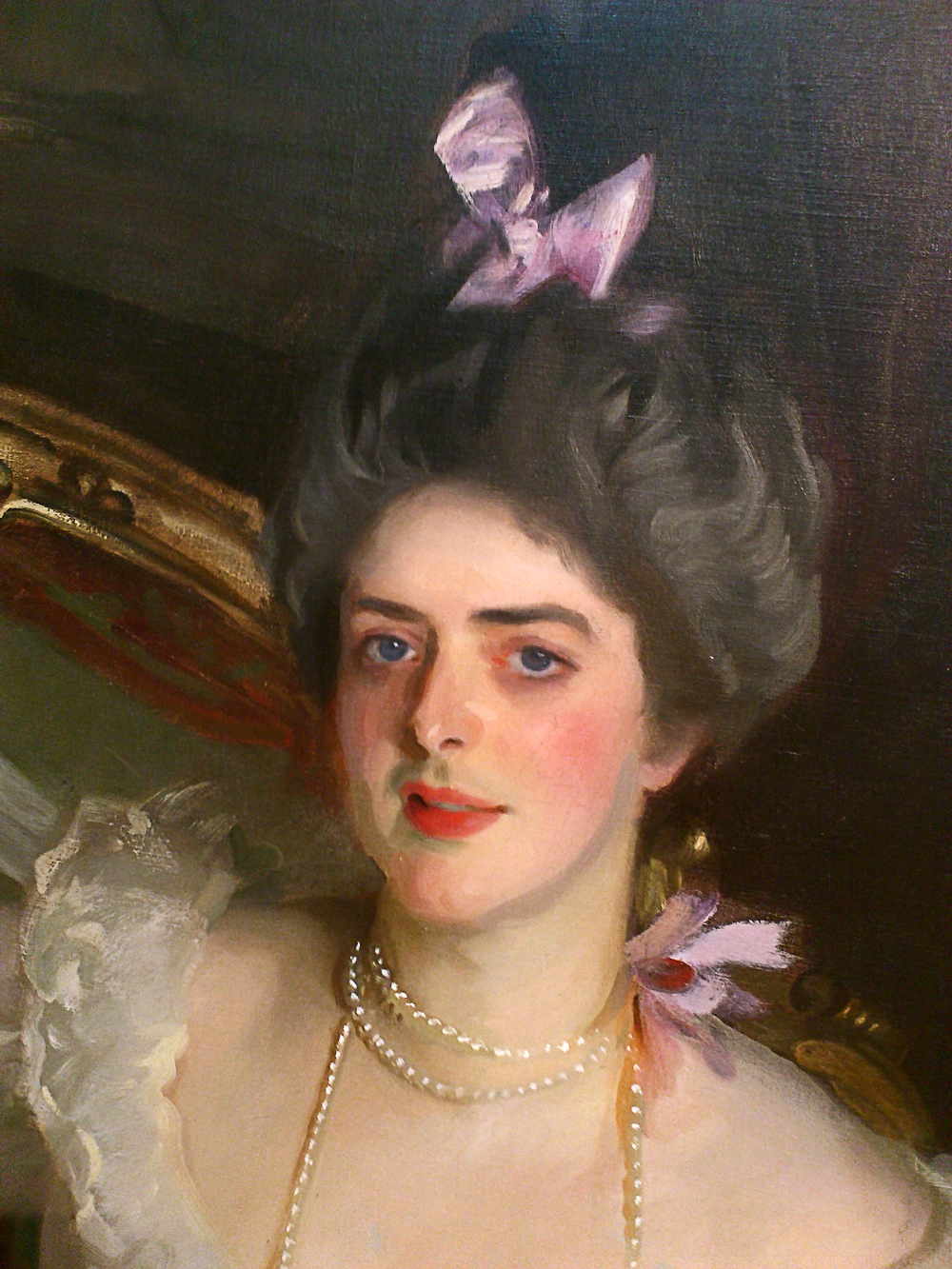
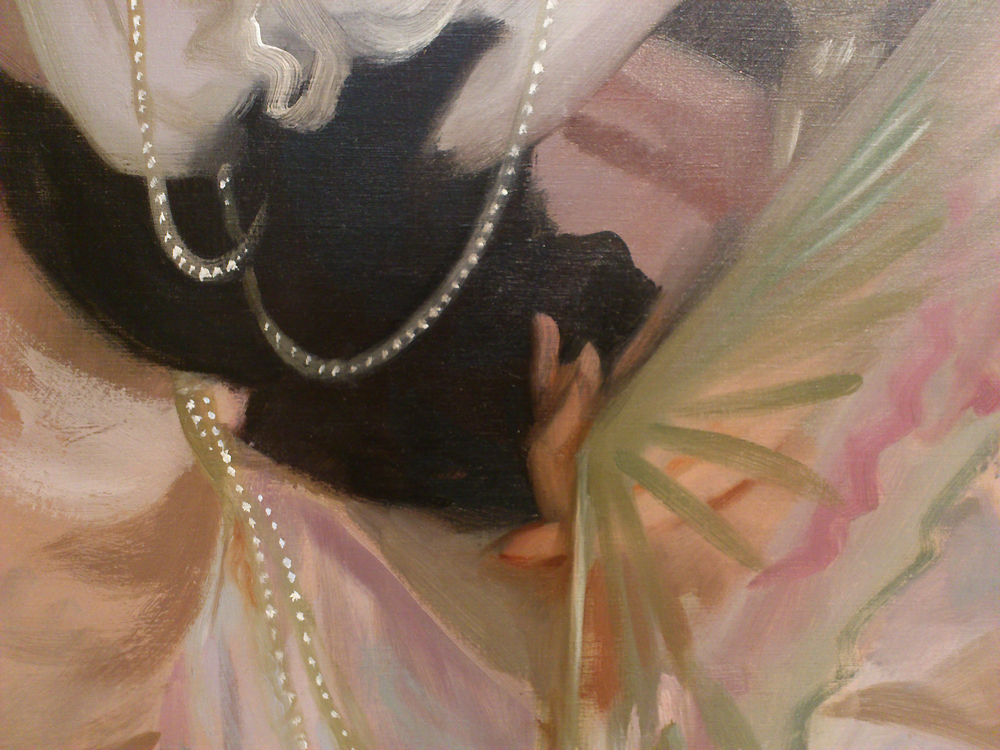

Colours in the background
‘What do you do with the background in a portrait painting?’ I hear this question often. The answer varies. I usually base it on what I see in the room. The colour of the surroundings, the wall, a cupboard, a curtain; I use the colours but sometimes blur the objects. What I often do is repeat some of the hues of the face into the background. This portrait shows the “echo trick” clearly. See also this post.
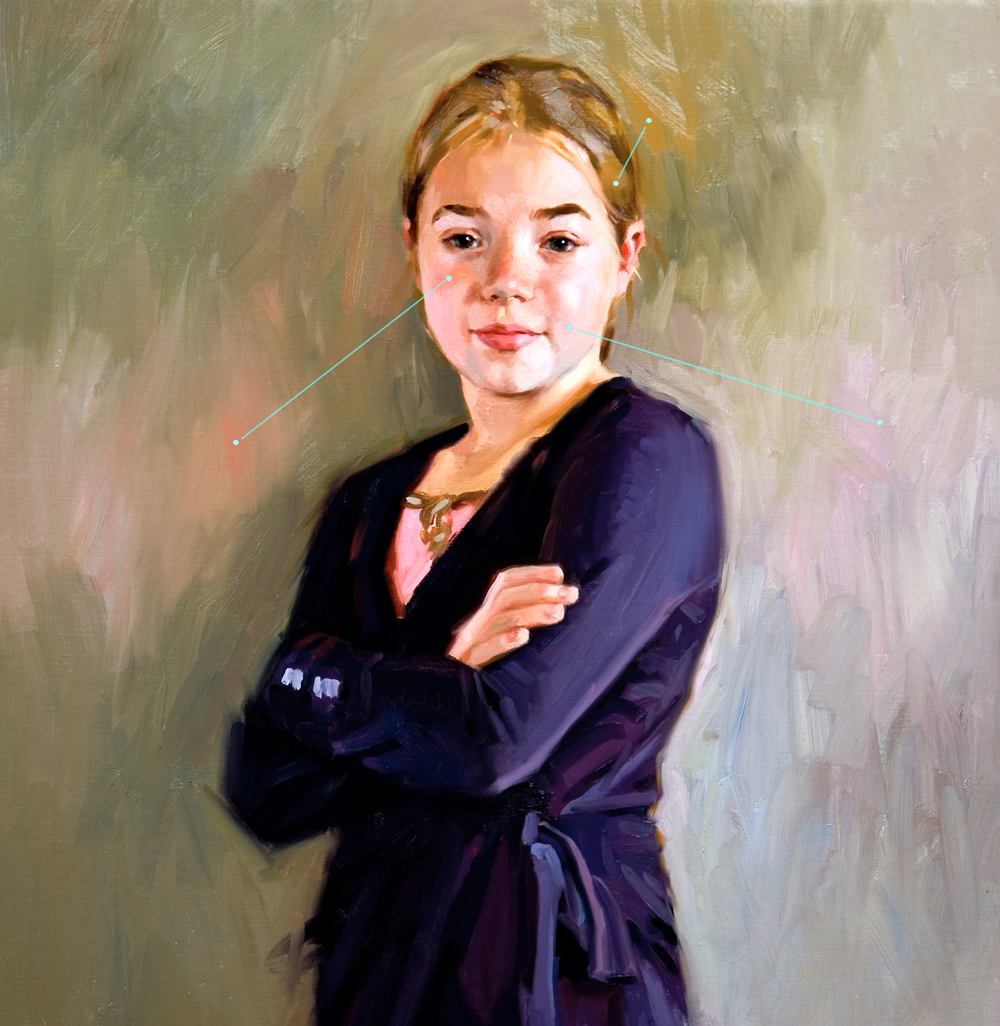
Why is this solution sometimes so effective? Colour balance has to do with mutual relationship. Usually I explain it this way: My colour scheme is based on colours that are members of the same family.
Introducing my wife
I have not often told you about Helma, my wife. She is a sculptress. In the past she has made some commissions of large dimensions.

The picture shows a sculpture from 1986, located in the city of Utrecht, Holland. It’s titled First Step. The contrast between her work and my portrait painting is that of abstract versus figurative, that is clear. About this opposition Salvador Dali says:¨It is either easy or impossible”; it has never been an obstacle between us. Her work has broadened my view. I am always fascinated how she responds to an event or a memory by making a piece of art without the need to create an image of the real world. Check out her website: www.helmavanrens.com
Props in a portrait
As you already know, I work almost exclusively on commission. It sometimes happens that a client wants to see a detail added to the portrait. An object that the person is very attached to or something that refers to his or her profession. I am always careful about this and wary of it as I do not think it necessary. If I cannot dissuade the sitter, I make the object or detail as unobtrusive as possible. The girl in this portrait plays in a circus as a clown, in her spare time. I did not want to depict her completely dressed up. She only holds a red clown´s nose in her hand. It’s a reference to her hobby, but she herself is the protagonist.

Late Rembrandt in Amsterdam
Because of my short stay in the Netherlands for some portrait commissions, I had the opportunity to visit the Late Rembrandt exhibition. I got the ticket as a gift. (thank you Julie)
What can I say about the exhibition? Staggering! Rembrandt is the greatest painter Holland ever had. In his heydays he was a most appreciated and well payed artist. Because of private problems, he became impoverished, was declared bankrupt and lost everything he owned. He could not even pay his rent anymore. In Amsterdam, he was reviled. The exhibition deals with these last difficult years.

Looking at one of his last commissions, Claudius Civillis I feel the anger towards the established order. Allthough the commission was acquired, it later was removed from its important place in the new town hall of Amsterdam. I see an artist experimenting his techniques and at the same time willfully seeking for problems with his clients.

If I should name three highlights: the portrait of Jan Six, a Woman Bathing in a Stream and finally An Old Woman Reading. This last painting really moved me deeply.









